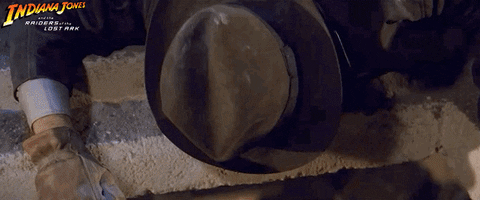2023 the Year of PinS..?
2023: the Year of PinS. How It Started and How It's Going...
“Haven’t seen you for ages. How are things going?” An apt phrase, I thought, as I started writing this latest blog, prompted by a brief catch up with my friend Pete on a recent cycle ride into the office through a very autumnal rural Dorset.
“Haven’t seen you for ages”: well, circumstances have been such that we haven’t written a blog for a while (sorry about that). “How are things going?”: how often we use that phrase with little real thought to how expansive the answer might be. In Avigation’s case, “things” tend to be PinS! How are they going? Well, read on…

Original Image Source: https://beyouthclothing.com/
As we offered in our last blog, “Game of PinS: a Tale of Cats & Dragons”, 2023 is the Vietnamese Year of the Cat; in Vietnam, cats hold unique spiritual meaning, are considered to bring good luck and smooth sailing and are believed to ward off bad spirits. Admittedly, a tad contrived, but our purpose was to highlight that the UK PinS journey is indeed underway and a route (smooth, navigable or otherwise…) is being laid before those who seek to implement such procedures.
What Avigation Are Doing. To set the scene: Avigation and Pildo Wessex are now supporting the Dorset and Somerset Air Ambulance (DSAA) with the introduction of GNSS IFPs (PinS approach and instrument departure) at DSAA’s operating base at Henstridge aerodrome on the Dorset/Somerset border (which I cycle past each morning on my way to the office). In progressing the corresponding ACP, Avigation is working closely with Specialist Aviation Services (DSAA HEMS delivery partner and ACP sponsor) and Pildo Wessex. The project is certainly moving forward, but - as you might imagine - it hasn’t all been smooth sailing (we intimated as much…). That aside, where are we in this process?
So, Where Are We? Let’s spin forward six months and return to this blog’s title, how are things really going? To best explain, we thought we’d coin some oft used phrases that we see on social media: “How it started” and “How it’s going”.
How It Started. Regular readers will know that, earlier this year, CAA announced the 5 successful applicants for the DfT’s GNSS Implementation Programme (Phase 3) and associated funding. The 5 sites (and their sponsors) would have the support of a dedicated team within the CAA - the GNSS Facilitation Team. The Facilitation Team would be separate from the CAA Airspace Regulation Team (i.e. those who manage the ACP process); the theory being that the Facilitation Team would be the conduit to assist sponsors to navigate the ACP process as quickly as practicable. So far, so good 😎
How It’s Going. Firstly, some of the 5 sites changed, although this did not materially impact Phase 3 of DfT’s implementation programme. As we offered in our previous blog, “[t]he (surmountable) challenge … is for the CAA to set the pragmatic regulatory route for sponsors to follow for their respective helicopter operations and PinS ACP applications”. Has that really happened..? To a certain extent it has and - generally - sponsors and their respective consultants have been able to follow the regulatory ACP path set out in CAP1616 Part 1c.[1] The devil was always going to be in the detail, and - as we opined last time - there indeed remains a shortfall in some of the detail.
Although now being “worked”, several regulatory challenges should (and could) really have been resolved much earlier (i.e. when the programme was announced, not while the programme is underway). The sponsors' perception is that these challenges are only being addressed by regulators when sponsors meet the issue(s) and/or (rightly) seek clarification (sub-optimal
and
time-consuming…). Addressing the unresolved issues reactively (vice proactively) continues to contribute to delays to these ACPs, as answers and/or mitigations are only determined while we head down the track...

Additionally, recently-highlighted resource constraints within the CAA mean that ACP “stage” milestones have drifted right (there are no official ‘Gateways’ to pass in the Part 1c process). The upshot for sponsors is that they are being delayed at milestones waiting for approval to progress to the next stage.
Notwithstanding the foregoing, we are extremely pleased to report that things are progressing. Despite these bumps in the road, the process is moving along and there is undoubtedly a real determination amongst all stakeholders to see these procedures implemented as early as practicable. Critically, though, the light at the end of the PinS tunnel is not a train!
The Rest of the Journey (“Are We There, Yet..?”). As I write, we have moved on to Stage 3 of our ACP journey, the Stakeholder Engagement phase, but await a regulatory decision on our Stage 3 submission, before fully embarking on our stakeholder engagement activities. To cover some early ground and give our stakeholders a heads-up, some preparatory engagement has taken place and the reception has been nothing but positive and cordial.
Once the Stage 3 phase is complete, the formal ACP application can be compiled (in a very compressed and short order) and lodged with the CAA for the latter’s deliberation and decision. All being well and following regulatory approval, the corresponding IFPs can be subjected to flight validation, AIS promulgation and be introduced at Henstridge in late 2024.
Good Omens. Rather neatly, this brings us back to our previous blog, when we hoped that “[in 2024] we won’t still be trying to move heaven and earth to get PinS successfully implemented in the UK”. Well, a little (manageable) heaven and earth moving aside, it appears that 2024 will indeed be the Year of GNSS IFPs (PinS) in the UK. Moreover, the introduction of Phase 3 of the DfT’s GNSS Roll-out Programme will undoubtedly be the catalyst for future GNSS IFP implementation in the UK - hopefully, all parties will take the opportunity to draw upon and learn from the lessons identified from the Phase 3 journeys.
In the Vietnamese calendar, 2025 will be the year of the snake; while snakes can appear dangerous, in Vietnam they signify luck and prosperity. Surely, a good omen for UK PinS and for those considering embarking on the PinS journey.

Source: www.cbs.com
As always, we will keep you posted. Be sure to look out for our Christmas Blog.
Avigation Can Support You
Avigation has a demonstrable breadth and depth of experience in PinS development and implementation through our long association and close working relationship with Pildo Labs, a UK CAA-approved instrument procedure design organisation with unrivalled experience delivering PinS in mainland Europe.
Additionally, Avigation has first-hand, practical experience in the management and delivery of the UK CAA’s CAP1616 and ACP processes and continues to support its clients through these activities. Avigation is, therefore, ideally placed to support organisations who are considering airspace changes and the design, development and implementation of instrument flight procedures.
[1]. “Airspace Change Process for RNP Instrument Approach Procedures (IAPs) without an Approach Control Service”







